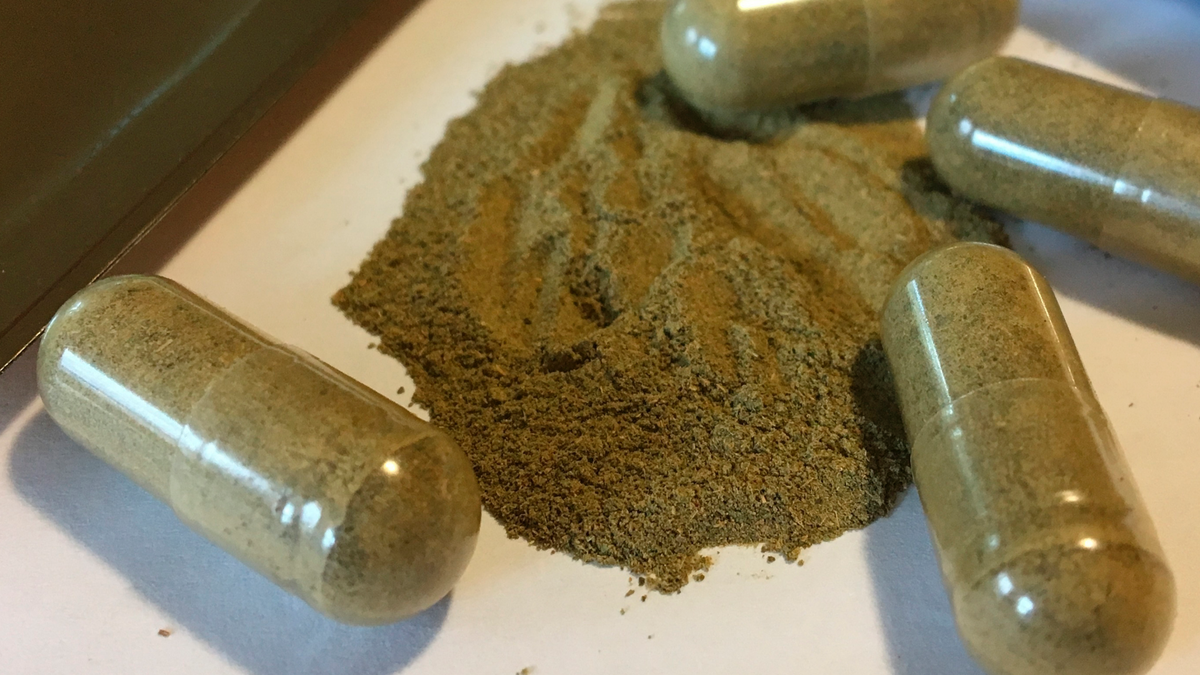
FILE - This Sept. 27, 2017 file photo shows kratom capsules in Albany, N.Y. A U.S. government report released Thursday, April 11, 2019 said the herbal supplement was a cause in 91 overdose deaths in 27 states. (AP Photo/Mary Esch, File)
My college-age son called me recently and asked me about “kratom,” saying that it was all over campus and even some of his friends were trying it. Thankfully, I got the phone call asking about what it was rather than him just hopping on the bandwagon of trying the latest trend. “What is it?” he asked. And for once, I had to admit, that although I had heard of it, I didn’t know much else about it.
This concerned me on many levels. How is there a “wellness” product being promoted and sold all over a college campus and I, a doctor and a parent, know very little about it?
CLARK GABLE'S GRANDSON, CLARK JAMES GABLE III, DIED OF ACCIDENTAL DRUG OVERDOSE, AUTOPSY SHOWS
And now, after doing my research, I feel compelled to spread the word about not only what this trendy new supplement is, but to warn everyone of the dangers associated with it.
Mitragyna speciosa, commonly known as “kratom,” comes from a tropical tree native to Southeast Asia – primarily Malaysia and Thailand. Most commonly the leaves are brewed as a tea or even chewed directly. My son tells me that the tea form is most common, and a tea labeled “green tea and kratom” is quite popular and being sold in most stores around his campus.
However, kratom is not a safe, benign plant. In fact, emerging data is providing strong evidence that kratom and its compounds work on the same central (brain) nervous system receptors as opioids, and therefore have the potential for addiction and abuse.
It is because of this opioid association that people are using kratom for pain relief and the euphoric high. But patients are also, according to the FDA, using kratom to treat opioid withdrawal symptoms. Alarmingly this can lead to further dependence, withdrawal and abuse.
Manufacturers of these products should not be allowed to mislead consumers into believing kratom is a “safe” alternative to opioids or that it is an effective therapy for any disorder.
Since kratom products are not regulated or required to be tested, there may be a risk of contamination by toxic substances or other drugs. The use of kratom is also associated with serious side effects such as seizures, liver damage and withdrawal symptoms.
Earlier this month, the FDA issued a warning about heavy metal contamination in 30 kratom products they tested. So not only are you introducing an opioid-like substance into your system, but you may also be slowly poisoning yourself with lead or another heavy metal that causes long-term damage.
There have even been reports of kratom being laced with other opioids like hydrocodone. Using kratom, especially in combination with opioids or other psychoactive drugs that affect the brain, has resulted in death.
But even when not mixed with other prescription or illicit drugs, kratom might result in death. There’s clear data on the increasing harms associated with kratom. Calls to U.S. poison control centers regarding kratom have increased 10-fold from 2010 to 2015, with hundreds of calls made each year.
And U.S. health officials are now saying overdose deaths involving the herbal supplement are more common than previously reported.
A government report released last week said kratom was involved in 91 overdose deaths in 27 states. Officials previously said they knew of 44 nationally. Although the majority who died had also taken heroin, fentanyl or other drugs, kratom was detected as the only substance in seven of those deaths.
CLICK HERE TO GET THE FOX NEWS APP
We are still in the midst of a monumental opioid epidemic. Manufacturers of these products should not be allowed to mislead consumers into believing kratom is a “safe” alternative to opioids or that it is an effective therapy for any disorder.
Bottom line, there are no FDA-approved uses for kratom, and we are seeing very concerning evidence about its safety. So in no way can I tell my son I think it’s OK for him or his friends to even experiment with this substance.
